Petraio Prime
TPF Noob!
- Joined
- May 28, 2010
- Messages
- 1,217
- Reaction score
- 0
- Location
- Ohio
- Can others edit my Photos
- Photos NOT OK to edit
To the first point, I thought that Steiglitz, et. al. established that over a century ago, you may want to Google "photo secession". Photography, as an art, has been accepted for over a century, do you, in contrast to those photo historians, curators and authors, bring something to the table we don't know about? Would you care to share it with us? A blanket "I don't accept photography as art" isn't enough, elucidate, please.Compare my photo of the rugby game. Note the compositional aspects (triangles, diagonal lines, etc.).
I don't aspire to create photographic 'art'; photography isn't 'art' and can never be 'art'. What I do excel at is create visually interesting photographs. I do think this one is rather good, and is the kind of work that not everyone can do well:
http://www.photographyboard.net/rugby-game-1087.html
This sort of photograph depends on a little luck, of course. But look at the diagonal tension between the ball being pitched in the lower left of the frame and the faces being pushed in the upper right of the frame. This is close to a perfect photograph, as close as can be achieved under the conditions. No zone-head could dream of making such a photo. It's beyond their understanding and capabilities.
To the second point, all photography is based on compositional principals of varying sophistication (see the Gestaltists work, for examples of advanced compositional theory). While from a photojournalistic standpoint (where you seem to be stuck idealistically, btw), the linked image is very good; from a fine art perspective, it's a no starter, displaying a lack of cohesiveness and no communication of concept, typically banal and "snapshot"ish. Note that we come from different worlds, and have different notions of where the line between documentation/photo journalism and Fine Art exist. (or in your case, the outright rejection of the concept of Fine Art Photography)
Art (capital A) communicates concepts or feelings through the use of compositional tools and media, please explain the concept you are trying to communicate with this image in a manner that would be consistent and present your argument at the level of a university level academic portfolio review, please.
My error, I haven't use TX of any flavor in years, the reciprocity issues (solved by TMY, incidentally), make it an absolute last choice for me.I was referring to Tri-X Pan (ISO 400), not Tri-X Professional (ISO 320)
Only if YOU want it to be realistic, ref. Rieslander, Uelsmann and others. Does your rejection of photography as an art form extend to these artists as well. (please do tell, as Jerry and I have an ongoing discussion going on about a very similar topic) For further examples, I suggest you review Steiglitz's Equivilents series, as well as Edward Weston's large body of work. You may also wish to peruse the work of Man Ray's photograms as part of his larger body of New Bauhaus work, Margaret Bourke-White, HCB (Henri Cartier-Bresson), and others. I'm guessing that you also find the work of Picasso, Dali, Mondrian, Rothcko and Pollack "sick" as well. Understanding starts with an open mind, free of preconceived notions and a willingness to attempt to understand.
So, essentially, you expose for the shadows and pull development, aka N- development. Funny, where have I heard that term before....Yes, Barry has a methodology that works well, for smaller negatives. If one has a target resolution of ~10lp/mm in the final print, shooting 4x5 and 8x10, one really doesn't need to get "absolute maximum" sharpness, a 16x20 from a 4x5 negative only requires 40lp/mm of resolution in the negative, easily obtained with any lens made in the last century or so, Even with poor technique. I agree that Barry's methods are invaluble if you need higher enlargement ratios (working with smaller negatives), but in the rest of the photographic world, it's just an adaptation and simplification of the Zone System. He and I had several conversations regarding this very issue, and while his techniques are essential for smaller format work, as you move up in negative size, they become less and less important.
But you contradict yourself, only by having objective, hard data (e.g. denstiometer readings, both transmissive and reflective) can you control your process, printing is verification that you have gotten it right, not a metric in and of itself. How else can one learn the limitations of the materials at hand without empirical data? The true artist knows how to use those limitations, and how to manipulate them to suit his vision. While your approach may hold valid on that one negative, printed at that time, future negatives may or may not have the same characteristics. The measure of success is the final print, yes, but it is not a measure of whether your negatives have been exposed and processed properly, separation of cause and effect, one of the core principles of the scientific method.
So, you don't look at a scene, try different vantage points, determine which, if any contrast control filter you need (if shooting black and white). Essentially, you just fire away and hope???? While you may not do it consciously, I bet at some level you do, nearly every photographer of any experience does, though not typically conciously. Are you sure you're not really an art major, heavily influenced by Dadaism, rejecting all that came before? (and attempt at humor, btw)
Poorly suited in what way? it has one of the longest stright line curve segments since Super-XX, minimal reciprocity failure, and is very tolerant of mis-handling. All of my Fine Art work is shot on TMY or TMX, with only a few exceptions. It is one of the most predictable, stable long tonal range modern emulsions around, bar none.
Optimum according to whom? I bet if you changed enlargers, or paper, ore developer, your "optimum for 35mm) would go away quickly. Grade 3 compresses the upper values horribly in my opinion. What enlarger, paper, filtration are you using, out of curiosity?
No, it's intended use is to give you a repeatable, consistent shade of gray to meter from. Kodak even cautions against using a gray card for sensiometric testing, recommending either a Q13 or Q14 card. Every year I send all my meters to be recalibrated and checked out, on each invoice is a reminder from the cal shop to "verify metering and either adjust to your process or recalibrate your process". This is from one of the largest light meter service centers in the world, do they know something you and I don't?
Manipulations are but a small part of the zone system, a very small part. What "looks best" to you may not to others. I have printed several Fine Art prints for clients that, due to lower light levels than in the gallery where my work was on exhibit, requiring a slightly lighter print. Are they wrong? Of course not, the effect on tonality and light levels is intuitive, or should be.I don't reject 'calibration'; I reject zone system manipulations of contrast. I rarely vary more than half a grade from grade 3. The photos look best that way.
One thing I recommend to everybody that asks me about learning photography, at the very least, take a few art classes at the local community college, it's easy to get caught up in the technical nonsense, and somehow miss the forest for the trees. Having a good solid footing in art history, compositional skills and color theory make photography infinitely easier, and make the photographer a well rounded artist as well.I recommend that book too, and it rejects the zone system approach as well.
I guess we can agree to disagree, though I would ask that you at least consider some of what I've written.
1) You need to learn more about the term 'art'. Primarily, it means the product of the human hand. Photographs have a causal relationship to something that exists and reflects light. 'Art' does not have any such causal relationship; the relationship is representational, not causal. One could have a painter set up his easel in front of the Queen and paint...a dog. It would be 'art'. That's what 'art' is.
Look up the term 'art' in an unabridged dictionary or encyclopedia. The terms 'Bachelor of Art', 'Bachelor of Science' have a connection to this discussion. The 'Liberal Arts:
Liberal arts - Wikipedia, the free encyclopedia
The term "Fine-Art Photography" is an oxymoron. The "fine arts" are painting, sculpture, etc. The adjective 'fine-art' refers properly to the tools (brushes, oils, chisels, etc.) used by painters, sculptors, glass-blowers, pot-makers, etc.
Also, see Roger Scruton's essay "Why Photography is not Art" in The Aesthetic Understanding (1983).
2) As you can see, it is almost pointless for me to talk to photographers about such philosophical issues. They don't have the educational background to discuss these things. Steiglitz was not a philosopher, and he had no idea what 'art' means.
3) You will never need a densitometer to make good prints. All that matters is that you develop the film in such a way that you get good results in printing.
4) The most beautiful photographs are not tonally 'manipulated' (by which I do not mean uncontrolled).
5) No, I do not use 'N-1'; I simply find that from the standpoint of fine grain and sharpness, the ISO recommendations are not the best.
6) The original TMY had a 'sagging' lower mid-tone curve, and a rising upper curve. The meant that the shadow areas were 'weak' in contrast (the worst thing for outdoor work, where flare is more prevalent) and the highlights (where clouds record) were strong in contrast (making it hard to avoid blown-out clouds). Tri-X Pan has the very reverse, a 'hard' shadow area and 'soft' highlight area. This is more suited to outdoor work for obvious reasons. generally speaking I have not been a fan of T-Max films, at least not for outdoor work. They are more suited to studio use.
7) The rugby photo is I think quite good compositionally (sorry the image quality on the site is not that good), but I have to say a bit of luck was involved. At the same time, I had the 'luck' because I have the skill and experience to know what to try...look at the diagonal 'dynamic tension' between the lower left and upper right.
8) Tonally it makes no difference if you develop for grade 2, 3, or 4. Paul Butzi proved this a few years ago (he had a whole article on-line about it, which seems to have disappeared). He used step-wedges, and he was surprised to find it made no difference over a long range (grade 2-4 at least). The reciprocity fell off a bit at very low grades.
The use of grade 3 allows a lower-contrast negative to be used, produced by gentler development. Every second a film stays in the developer it is getting blurrier and grainier...(all development is infectious)...so it makes a difference in overall image quality, not tonality, to use a harder grade. I use Ilford Gallerie grade 3 as a reference. Why not grade 4? It's worse, that's why. the ideal seems to be about grade 3.
Last edited:




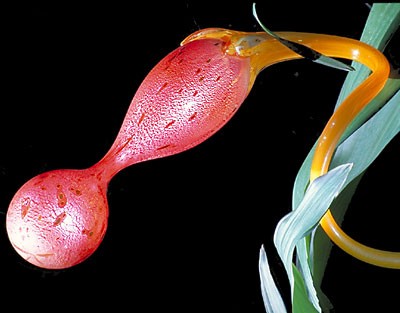


![[No title]](/data/xfmg/thumbnail/34/34042-f37784c4a5db3d0cf34059cad22b288c.jpg?1619736251)
![[No title]](/data/xfmg/thumbnail/39/39295-230d6dc9ce62e92561457d4c8fb67dc6.jpg?1619738959)



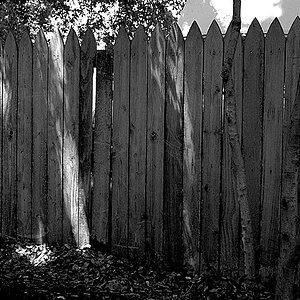
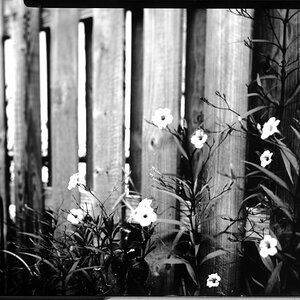
![[No title]](/data/xfmg/thumbnail/41/41935-851da2b46dc9cbb829c8c42b2aa84873.jpg?1619739947)

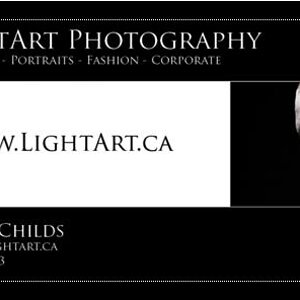
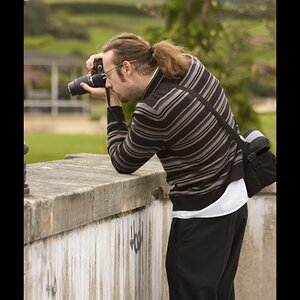
![[No title]](/data/xfmg/thumbnail/35/35865-5006be46d328277e5a956fa323782d97.jpg?1619737192)